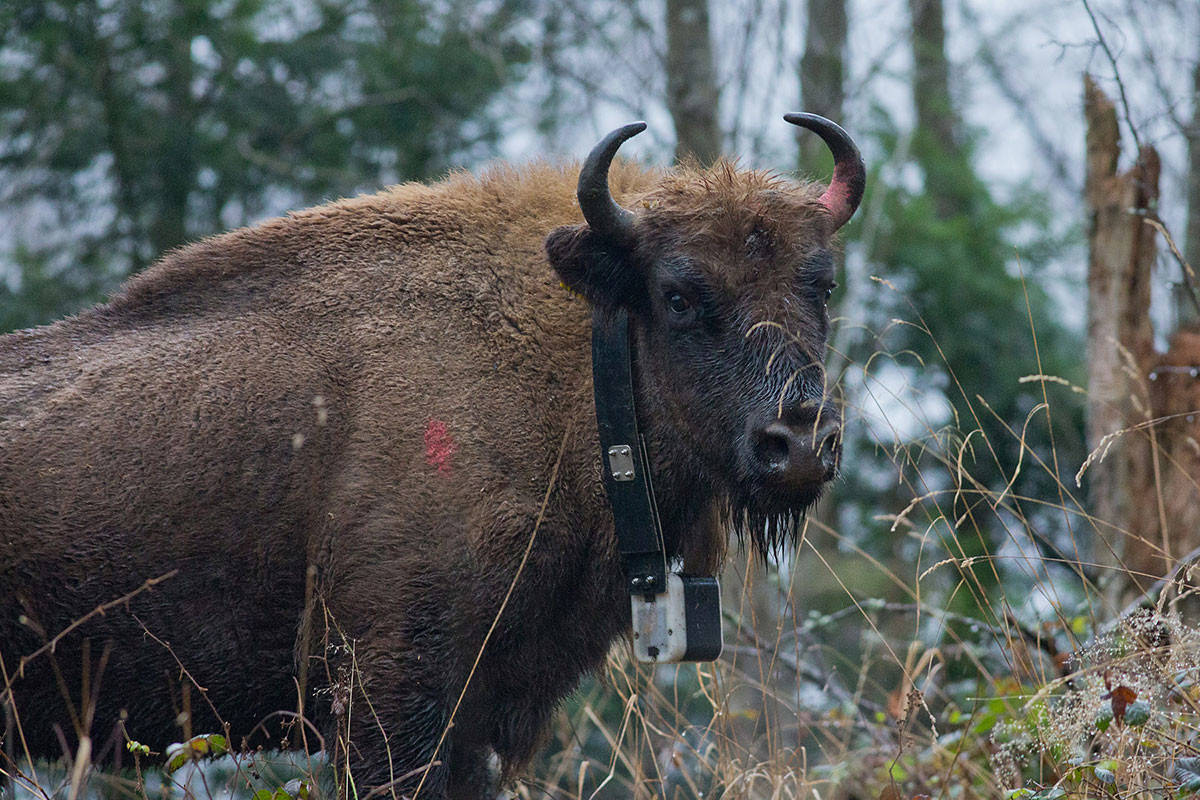 |
| A female European bison wearing a radio collar |
The European bison is the heaviest surviving wild land animal of Europe. Like its American relative, this gigantic beast suffered drastically in the hands of people over the course of history, due to excessive hunting and loss of habitat throughout its European homeland. By 1919, it was declared "Extinct in the Wild." Thankfully, captive breeding efforts has helped it make a comeback. The current population numbers 3000, making this bison rarer than the black rhinoceros. Now, initiatives of rewilding are bringing these animals back along with other large herbivores, such as semi-wild horses and cattle bred to resemble their extinct wild relatives. As part of the efforts to bringing these majestic animals back to their former haunts, four bison were released in the Netherlands' Maashorst Nature Reserve, with four due to be released in the Veluwe region next month. In addition, another herd of twenty bison is scheduled to be released in Romania in May.
 |
| Range of the European bison (Yellow- Holocene Range; Dark Green- Historical Range; Red- Relict 20th century populations |
The European bison has long been considered one of the most majestic creatures in Europe, whose range once extended eastwards to the Caucasus. In Europe, its range extended towards the Balkans and all the way to eastern France. However, as human populations expanded, the bison was pushed further towards the brink of extinction. Captive breeding and reintroduction efforts helped this animal return from extinction, most notably in the Bialowieza Forest in Poland. Then, during the 21st century, reintroductions across Europe were made in countries like France, Germany, Belarus, etc. where the bison had historically disappeared. Such efforts have been made and continue to be made by a Dutch trust called Rewilding Europe, whose main goal is to establish at least five wild herds of hundred bison by 2022 and an overall wild population of 1000 animals by 2032. The program has so far reintroduced more than thirty bison to Romania's Carpathian Mountains, where the animal is a symbol of national pride and economic renewal. In addition, the trust is also involved in projects in bringing back wild horses and cattle which had disappeared from Europe hundreds of years ago. These conservation initiatives would not only bring back the animals that had once disappeared from Europe, but also restore the continent's biodiversity from centuries past.
View article here
A great article about bisons, they are a sight to see. Hope they have been tamed.
ReplyDeleteThank you...they are not tamed but they are indeed a sight to see.
ReplyDelete